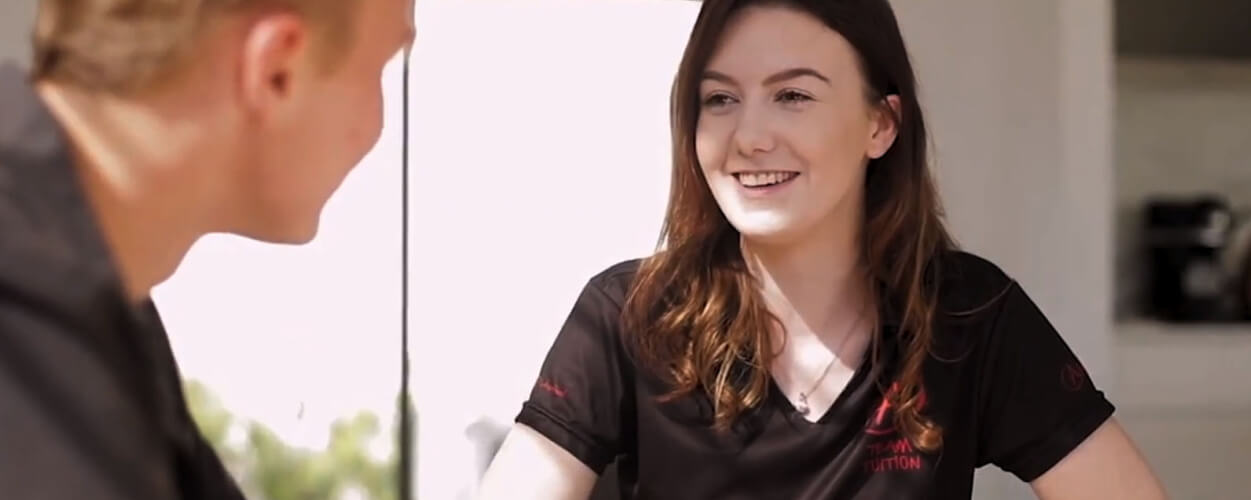The ATAR System Explained For First Timer Parents
UPDATED 2022
Well, the first years of ATAR were rough ones. Nothing like the most important year of your school life being disrupted by a pandemic and then floods! The ATAR system is a more complex, and many argue fairer system than the OP Score and TE Scores most parents will remember from their own school days. The Australian Tertiary Admission Rank is a nationally recognised score that allows students to apply to universities across Australia. Now, while this is a positive step in the right direction for education in Queensland, it has unfortunately been subject too much controversy. Many parents are overwhelmed, fuelled by confusion and concern about the newly introduced education system. This uncertainty has parents feeling nervous about the impacts of ATAR on their children’s education. So, besides that, what’s changed?
Adjusting to the ATAR System

At A Team Tuition, we pride ourselves on our ability to adapt to changing circumstances. Our tutors (Academic Personal Trainers) similarly impart this adaptability onto our students in light of imminent transitions between grades, teachers, and styles of learning.
Recognising the issues that have arisen from the transition (and not just the 2020 kerfuffles), we’ve created tailored ATAR tutoring programs to helps students reach their academic goals. We want to provide you and your children with the ingredients to succeed in school by leveraging the implementation of this system to their advantage – our tutors are always huge fans of having their students one step ahead of the game!
With that being said… we have compiled a brief overview and summary of the six levels of processing, regarding the ATAR system below for anyone else who is lost!
Read our ATAR FAQ’s HERE
So, what is ATAR?
At the start of 2019, the Queensland Government introduced a new Queensland Certificate of Education (QCE) system. Previously known to many schools, parents, and students as “the OP system including QCS”, the new approach is called the “Australian Tertiary Admission Rank” (ATAR) system. To understand what ATAR is… it is important to know where it has come from and how it is different from the old ‘Overall Position’ (OP) system.
Students who have graduated may already be familiar with the old and outdated OP system in Queensland. The OP system was used to provide each OP-eligible student a state-wide rank, from OP 1 (highest) to OP 25 (Lowest) that was solely used to gain entrance into tertiary education. OP’s were calculated with the results of the student’s individual overall achievement in five of their OP subjects.
However, a student’s OP is also influenced by their school’s performance in the QCS standardised test. Unfortunately, this means that if a student attends a rural state school that does not perform well overall, they are more likely to receive a bad OP (regardless of their personal achievement).
This system is not only unfair, but it also unhealthily promotes competition between schools and students.
However, since the old OP system has fallen from grace, ATAR has stolen the spotlight!
How ATAR is better than the OP System
ATAR is a new ranking system that gives students’ a score to be compared to others. This score is on a 2000-point scale from 99.95 (highest) down to 0 (lowest), with increments of 0.05 increments. It has a range of benefits to students in QLD that they were previously denied by the old OP system. Arguably, the most important benefit for your child is that ATAR is a much fairer system. ATAR is calculated ONLY on the student’s individual success in a weighted combination of both internal and external standardised testing. This new approach aims to promote healthy collaboration between students to maximise their learning capacity.
See more about the hidden benefits of ATAR
As a result, our children’s results are able to be more fairly compared to other students, when applying to enter tertiary education.
An extra bonus is that the majority of the rest of Australia are also utilising the ATAR system, thus student’s results will be more easily understood nationally.
The new ATAR system includes a total of 16 semesters of ATAR subjects and 4 semesters of a general subject. These subjects will each have 3 internal and 1 external exam. The weight of these results are as follows:
E.g. Assessments per subject:
Maths and science subjects:
3 x Internal Assessments = 50%
1 x External Assessment = 50%
All other subjects (English, humanities, etc.):
3 x Internal Assessments = 75%
1 x External Assessment = 25%
Students generally receive practice assessments for both internal and external exams, the year before they conduct it officially.

But how is your child’s ATAR score calculated?
Like the old OP system, ATAR uses the scaled scores of each students’ FIVE best subjects. Each subject will be scaled by QTAC, according to the difficulty of the subject.
This can include 5 general subjects or (4 general subjects + 1 Applied subject or VET course at AQF Certificate III or above).
However, it is important that parents note that for their child to be eligible for an ATAR they must obtain at least a C in English (there are 5 English subjects to choose from). However, the English score does not have to be used within the ATAR calculation, if a student has 5 other subjects with a better scale.
High school got complicated right?
What does this change mean?
So, we know that ATAR is very different from the old OP system! Of course, you can’t avoid wondering… how will this change affect my child?
The introduction of the new ATAR system means that our children’s assessments and the structure of their learning will be different from that of the past.
Therefore, it is important that students develop strong relationships with their teachers and their peers by showing respect, displaying good behaviour, listening, and being engaged and proactive in class. This will provide students with the confidence and platform to continually ask for expert help, assistance, and feedback, easing their transition into ATAR. To learn the theory behind ATAR click HERE.
Year 11 and 12 are both ATAR years – and Years 8 – 10 matter too!
ATAR’s foundations are all laid in year eleven and those results matter – it’s not just a year twelve process. It’s recommended that your child begins preparing for ATAR at the beginning of year eleven at the very latest. Before that, your child will be laying the foundations for their all-important senior years – so ideally, you’ll help them to prepare for their final exams as early as years 8 and 9. Your child doesn’t need to know “exactly what they’ll be when they grow up” while they’re still in braces – but helping them to develop their academic passions and skills early will help them make the right choices going into year ten. Learn more about our approach to working with secondary school students.
Performing in the right subjects
Here’s the problem, just because your child excels at Physics and Chemistry, doesn’t mean they’re going to get a great English grade. Or perhaps your budding historian needs to do well in their science subjects to get a coveted place in archeology. Let’s not even talk about the stress of trying to win a place in medicine or law. ATAR tutoring needs to include ALL of the subjects your child will be rated upon. That may mean that your child’s score will be dependant on them lifting their grades in two very different subject areas… Finding a tutor who can work on year 11 and 12 physics AND advanced English – not the easiest task for any parent. That’s why our ATAR Tutoring programs are tiered. If your child just needs a boost in one subject, no worries. Perhaps it’s two? Maybe they’re an allrounder who is an “across the board” B student – and could do amazing things if they just bumped those Bs to As.
ATAR tutoring is about fine tuning their results using the right strategy, support network and expertise. Our tutors are carefully trained to recognise barriers to success and to put the right strategy in place to overcome them. Your B allrounder may simply be a Visual learner…and will immediately take that A grade leap when they can see the connection between the curriculum and the answer. It’s about finding a tutor that understands more than just the curriculum. And that’s where we’ve excelled, for over a decade now. Even if you’ve tried tutoring before, with little success, an A Team Tuition tutor could see your child smash that “grade ceiling” and take their place in an exciting career. Isn’t that worth a phone call?
So, now what?
